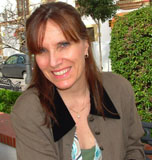by Steve Taylor
It may be humbling for instructors to realize that they don’t necessarily inspire the highest quality of writing from their students. Of course, students are motivated by grades to submit good writing to their teachers, but many have found that the prospect of students having their papers read by their peers can be even more motivating. For years now, many instructors have had their students upload written assignments to a shared digital space and found that the expectation of that sharing significantly improved the quality of writing.
The ante is now raised, as some instructors require their classes to share their writing with the whole world, via a publicly accessible website, such as a blog. These students know that they not only have to assemble sentences well enough to avoid embarrassment among their classmates, but they have to get their information right or risk being called out by any number of experts in their topic.
Publishing to the world is more than just a challenge not to fail, though— it’s also an opportunity for students to put themselves out there as legitimate, albeit novice scholars. Instead of paying several years of dues in graduate school before daring to submit a bit of original work in a peer-reviewed scholarly journal, they’re publishing now, and getting feedback as well.
At an ACS symposium this fall, Profs. Lisa Paravisini and Jenny Magnes spoke about these and other benefits of student blogging. “If you define your assignment topic well,” Lisa said, “having students publish their writings to a blog ups the ante, in terms of audience. The potential audience is the world.”
One assignment she uses is to have students completely re-write a Wikipedia article. Their research must be thorough, accurate, ethical, and original. Sometimes earlier contributors to an article will immediately undo the submission; other times, it will remain and possibly generate some discussion among different contributors.
It’s even more interesting for a student to be able to publish original material, something that’s more feasible than most people realize. Students in Lisa’s environmental studies project photographed and interviewed people adjacent to the Casperkill Creek and blogged their work. What they shared was unique materials, of interest to a potentially wide audience.
Jenny Magnes assigned her students to propose and execute a simulation project related to electricity or magnetics. They had to write a proposal, then a plan, create the simulation, and finally post their reports on the blog, along with their data files.
All of it was original work. Jenny browsed the web to make sure none of the proposed ideas were already posted somewhere. Each student had to make substantive, constructive comments on each others’ posts. But classmates weren’t the only ones responding.
One of her students did a project on induction (as in induction ovens), including one video that she made and one that she found on YouTube and several simulations, depicted with thoughtfully designed graphs. One of the reader comments was from an upstate firm that does work similar to what she had simulated— the student was invited to visit the plant and speak with the engineers!
Lisa has also seen some surprising responses to blog posts. In her own blog about Caribbean Studies, she mentioned some of Sean Penn’s work and promptly received a comment from Mr. Penn’s assistant. One student posted a critical analysis of a book and heard back from the book’s author!
As Lisa says, online publishing brings a sense of responsibility to students’ research methods; they have to carefully consider issues of integrity, ethics of attribution, and originality. Because you never know who might be watching.










